
Minecraft 1.17 (Caves and Cliffs Update) is here! This script and guide are written to help you get a great performing Raspberry Pi Minecraft server up and running in only a few minutes.
This is the standalone version. It runs on most flavors of Linux and should work on most architectures as well (arm, aarch64, etc.).
I highly recommend using Docker over the standalone version for most people. Installing Docker is as simple as sudo apt install docker.io. There are 3 Docker options available:
- The Docker version that has Geyser + Floodgate installed (allowing people running Minecraft Bedrock Edition such as on iOS, Android, and console to connect)
- The Docker version that runs the Purpur Minecraft server with Geyser + Floodgate installed (allowing people running Minecraft Bedrock Edition to connect)
- The Docker version that only includes the Paper Minecraft server (the same as this standalone version)
It’s now possible to convert your worlds between Bedrock and Java versions. Check out my guide on Chunker here for more information.
Features
- Sets up fully operational Minecraft server in a couple of minutes
- Runs the highly efficient “Paper” Minecraft server
- Raspbian / Ubuntu / Debian distributions supported
- Installs and configures OpenJDK 18
- Sets up Minecraft as a system service with option to autostart at boot
- Automatic backups to minecraft/backups when server restarts
- Updates automatically to the latest version when server is started
- Easy control of server with start.sh, stop.sh and restart.sh scripts
- Optional scheduled daily restart of Pi using cron
Requirements
- Raspberry Pi model with 1 GB of RAM or higher. Basically a Raspberry Pi 2B or higher. (No Zero unfortunately, 512MB is not enough RAM to do this, I’ve tried!)
- Headless Linux distribution such as Raspbian Buster Lite, Ubuntu Server 18.04.2, or any Debian based distribution (GUI distros can be used at the expense of available RAM and server performance)
- Solid state drive highly recommended but not required.
You can get a SSD setup on a Pi for less than most Micro SD cards cost. See my article here for details - If using MicroSD you want to be using a high range card otherwise you will really be hurting on IO when the server is reading/writing chunks of terrain! Click here for MicroSD card benchmarks/recommendations.
Recommended Gear


The Raspberry Pi 4 is available in different memory configurations all the way up to 8 GB. It’s about the size of a credit card and uses an extremely low amount of power making it ideal for all sorts of projects and ideas!
Links: Amazon.com*, AliExpress*, Amazon.ca*, Amazon.com.au*, Amazon*.co.jp*, Amazon.co.uk*, Amazon.de*, Amazon.es*, Amazon.fr*, Amazon.it*, Amazon.nl*, Amazon.pl*, Amazon.se*, Amazon.sg*

The Raspberry Pi 400 kit includes everything you need for a full Pi 400 desktop build. The Pi 400 is the fastest Raspberry Pi ever released and comes in the form factor of a keyboard!
Links: Amazon.com*, AliExpress*, Amazon.ca*, Amazon.com.au*, Amazon.co.jp*, Amazon.co.uk*, Amazon.de*, Amazon.es*, Amazon.fr*, Amazon.it*, Amazon.nl*, Amazon.pl*, Amazon.se*, Amazon.sg*

The Kingston A400 has been a great drive to use with the Pi for years. It’s reliable, widely available around the world, has low power requirements and performs very well. It’s also very affordable. This drive has been benchmarked over 1000 times at pibenchmarks.com and is the #1 most popular SSD among the Pi community!
Links: AliExpress*, Amazon.com*, Amazon.ca*, Amazon.com.au*, Amazon.co.jp*, Amazon.co.uk*, Amazon.de*, Amazon.es*, Amazon.fr*, Amazon.it*, Amazon.nl*, Amazon.pl*, Amazon.se*, Amazon.sg*
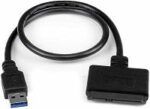
The USB 3.1 variant of the StarTech 2.5″ SATA adapter works well with the Pi 4. The USB 3.0 variant doesn’t have firmware updates available and is not recommended.
Links: Amazon.com*, Amazon.ca*, Amazon.com.au*, Amazon.co.jp*, Amazon.co.uk*, Amazon.de*, Amazon.es*, Amazon.fr*, Amazon.it*, Amazon.nl*, Amazon.pl*, Amazon.se*, Amazon.sg*
SD Card Setup:
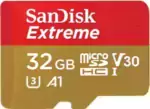
The SanDisk Extreme A1-A2 SD card has the best scoring SD card on Pi Benchmarks for years and is second in popularity only to the SanDisk Ultra (often included in combo kits). The application class (A1) means random I/O speeds (very important when running an OS) have to meet a higher standard. There’s no benefit on the Pi for A2 right now so get whichever is cheaper/available.
Links: AliExpress*, Amazon.com*, Amazon.ca*, Amazon.com.au*, Amazon.co.jp*, Amazon.co.uk*, Amazon.de*, Amazon.es*, Amazon.fr*, Amazon.it*, Amazon.nl*, Amazon.pl*, Amazon.se*, Amazon.sg*
Choosing a Linux Distribution
The most important consideration when choosing which flavor of Linux to run the server on is simple: available RAM. Headless Linux distributions such as Raspbian Lite that don’t have a built in GUI have
Our biggest obstacle when running a Minecraft server on the Pi is available RAM since 1 GB is extremely low for this type of server. To have a playable experience you should not be running anything else on the Pi so all memory is available to be used.
After testing on many different distros I am finding Raspbian Lite and Ubuntu Server 18.04.4 32-bit to be the best choices. These distributions come with very few background processes and have rock solid support and performance.
64-bit vs 32-bit
There’s a lot of discussion in the Pi world about the up and coming aarch64 64-bit distributions vs. armhf 32-bit distributions. They have been and continue to improve dramatically. There are already use cases where 64-bit is far superior such as video encoding, advanced compression, etc.
So how about for running a Minecraft server? I have been testing extensively with Ubuntu Server 18.04 64-bit and the Debian Buster 64-bit. I have consistently had worse performance and stability than on 32-bit versions of the exact same distros.
But how can that be? It’s certainly true that Minecraft servers benefit in CPU performance from 64-bit versions of Java. The answer is actually incredibly simple: memory. The server running on a 64-bit Java Virtual Machine uses a minimum of about 100 MB more memory. This makes perfect sense because 64 bits > 32 bits by definition!
The Raspberry Pi’s 1 GB of memory has been the biggest obstacle for this project since the very beginning. Back when I first went into the Paper Minecraft developer IRC room and told them what I was trying to do I was practically laughed out of the chat room for even thinking of trying this. Most Minecraft server branches including vanilla can’t even start on the Pi because of the limited memory.
For a dedicated Minecraft server on the Pi I very highly recommend staying 32-bit. You will have more available memory which means it will be much faster and more stable. Since memory is our bottleneck the increased CPU throughput does not help us and losing *any* of our memory is disastrous!
If the Raspberry Pi 4 has more memory like we all expect it to this recommendation will change completely. Even 2 GB of memory would make the extra memory that 64-bit uses a non-issue and the CPU throughput performance gains very desirable. For now though stay 32-bit for a Minecraft server!
Tested Distributions
Raspberry Pi OS – It’s Raspbian. It has very low memory usage and is the official distribution of the Raspberry Pi. The server runs very well on this. It’s overall the best choice. The Buster release has made OpenJDK 11 available on it so it’s no longer behind the rest of the distros.
Ubuntu Server 18.04 / 20.04 – Ubuntu Server is my favorite Linux distro. I use it for nearly all of my projects. The performance of the 32-bit armhf version is on par with Raspbian. It’s a great choice! Click here for my Ubuntu setup guide for Raspberry Pi. The 64-bit version is not a fantastic choice and not recommended because of the higher memory usage. Stick with 32-bit and you’ll be a happy camper with Ubuntu Server.
Debian Buster 64-bit – Debian is the distribution Raspbian is based on. This version is a preview of Debian “Buster” which is the successor to Stretch and will be the next version of Raspbian when it is released. I like this distribution but it is currently still unofficial and unsupported. Performance and stability was less than Ubuntu and Raspbian.
Minecraft Server Installation
SSH into your Raspberry Pi and paste the following commands:
curl https://raw.githubusercontent.com/TheRemote/RaspberryPiMinecraft/master/SetupMinecraft.sh | bash
The script will setup the Minecraft sever and ask you some questions on how to configure it. I’ll explain here what they mean.
“Enter amount of memory in megabytes to dedicate to the Minecraft server” – The amount of memory that will be dedicated to the Minecraft server. The more the better, but you must leave some room for the operating system background processes.
If you exceed the total available memory either the server will crash or the Pi will get incredibly slow to the point where your SSH session will start timing out. The setup script will make a recommendation to you which is your available memory – 10% for headroom. If you aren’t sure what to put just go with the recommended amount.
Note for Raspberry Pi 4: Currently on 32-bit Raspbian 2700 MB is the maximum that Linux will let us allocate in a 32 bit environment. The script has been updated to check for this as the server will not start if it is set over 2700M on a 32 bit server. 64 bit operating systems will be able to allocate all available memory as Pi 4 support rolls out for them.
“Start Minecraft server at startup automatically (y/n)?” – This will set the Minecraft service to start automatically when your Pi boots. This is great because whenever you want to play you can just plug it in and go without having to SSH in.
“Automatically reboot Pi and update server at 4am daily (y/n)?” – This will add a cron job to the server that reboots the Pi every day at 4am. This is great because every time the server restarts it backs up the server and updates to the latest version. See the “Scheduled Daily Reboots” section below for information on how to customize the time or remove the reboot.
That is it for the setup script. The server will finish configuring and start!
Check Java Version
Sometimes if you have multiple versions of Java installed the wrong version of Java will be selected as the default. If the server didn’t start check that the right version of Java is selected with this command:
sudo update-alternatives --config java
If you get the message “update-alternatives: error: no alternatives for java” then you only have one version of Java installed and can skip to the next section.
If you are presented with a list of choices then your machine has multiple versions of Java installed. It will look like this:
update-alternatives: warning: /etc/alternatives/java has been changed (manually or by a script); switching to manual updates only There are 2 choices for the alternative java (providing /usr/bin/java). Selection Path Priority Status ------------------------------------------------------------ 0 /usr/lib/jvm/java-11-openjdk-amd64/bin/java 1101 auto mode 1 /usr/lib/jvm/java-11-openjdk-amd64/bin/java 1101 manual mode 2 /usr/lib/jvm/java-8-openjdk-amd64/jre/bin/java 1081 manual mode
You will usually want to just select the newest version of OpenJDK that is listed so you would type 0 and press enter. In some cases on some platforms you may want to switch to the official Oracle JDK although I strongly recommend sticking with OpenJDK!
First Run
The first time you run the server it will take a little longer to start since it is generating all the server data. If you try to log in before it fully starts you will get a connection timeout error. Watch for the line: “Timings Reset”. This is the last line that prints when the server is ready to rock and roll. At this point you will be able to connect successfully.
The very first time you log into the server it will be slow for about 1-2 minutes. This is because since nobody has logged in before the server has to scramble to generate all the chunks within your view distance (10 by default) and send them to you/store them. During this time you may not be able to see very far and if you try to destroy blocks there will be noticeable lag from when they break to when they actually disappear.
Don’t panic! This will go away within a couple of minutes as the Pi catches up with all the first time login stuff it needs to do. Performance stabilizes and it will feel very much like the offline experience after that.
If you are hosting for a few friends I’d recommend logging in for the first time right after you set up the server instead of having several people nail a blank server at first startup. This gets it out of the way and when everyone is ready to log in the starting area chunks will be fully fleshed out and the Pi just has to read them. It’s an order of magnitude faster for the Pi to read chunks than to generate and store chunks.
In my experience after the initial login exploring new parts of the server doesn’t cause any lag even though new chunks are being generated. The reason for this is that when you’re walking it’s really only having to generate a new chunk as you get close to the border instead of a huge square area of chunks in all directions and all at the same time like during the first login.
Benchmarking / Testing Storage
If you’re getting poor performance or just want to verify everything is working correctly you may want to run my storage benchmark with:
sudo curl https://raw.githubusercontent.com/TheRemote/PiBenchmarks/master/Storage.sh | sudo bash
If you search for the model of your drive on pibenchmarks.com you can compare your score with others and make sure the drive is performing correctly!
Changing Minecraft Server Version
To override the default version let’s grab a copy of the script locally:
wget https://raw.githubusercontent.com/TheRemote/RaspberryPiMinecraft/master/SetupMinecraft.shnano SetupMinecraft.sh
Now make these changes from inside nano:
Version="1.16.5"AllowLocalCopy="1"
Now press Ctrl+X to exit nano and answer “y” to save. Now let’s run the script:
chmod +x SetupMinecraft.sh
./SetupMinecraft.sh
And the setup will run and install the version of Minecraft you set at the top of the file!
Changing Minecraft Client Version
If you are wisely running the “stable” branch instead of the “development” branch there will be times where you need to select the version of Minecraft to run otherwise you will get an error message that your client is outdated when you try to log in.
Fortunately this is very easy. Open up the Minecraft launcher and instead of hitting “Play” choose “Launch Options” in the menu at the top of the window. It will look like this:
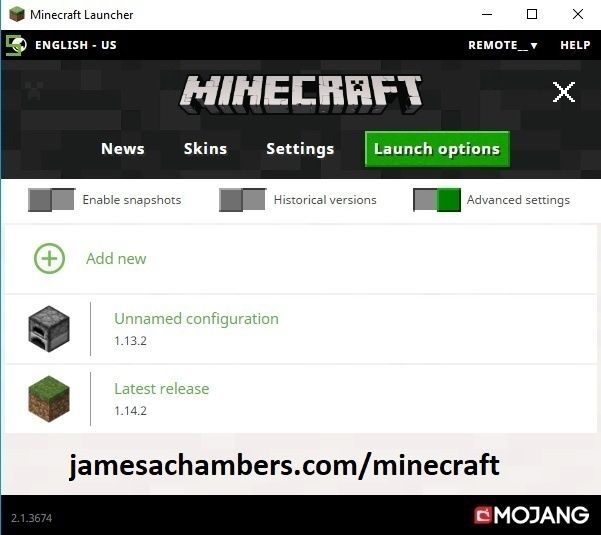
Click the “Add new” button and pick which version you want to add. You can optionally gave it a name or just click save.
Now when you go back to the “News” tab you will see a dropdown arrow where you can select which version of Minecraft you want to play!
Start, Stop and Restart Server
The server can be started, stopped and restarted two different ways. You can use the provided scripts in the Minecraft folder or you can use systemctl. Here are the commands:
cd ~/minecraft ./start.sh ./stop.sh ./restart.sh -OR- sudo systemctl start minecraft sudo systemctl stop minecraft sudo systemctl restart minecraft
Automatic Backups
The server backs up each time it starts. This helps you recover easily if something goes wrong. This system works best if you configured the server to restart daily since it means you will have a backup every day.
To access these backups type:
cd ~/minecraft/backups
ls
When a backup is made the filename will be the date and time the backup was taken. If you need to restore a backup it’s very easy. Substitute the timestamp in my example to the backup you want to roll back to. Type:
cd ~/minecraft ./stop.sh rm -rf world world_nether world_the_end tar -xf backups/2019.02.15.22.06.30.tar.gz ./start.sh
Your world has now been restored! It’s a good idea to download these backups off the Pi periodically just in case the Pi’s storage fails.
Scheduled Daily Reboots
The daily reboots are scheduled using cron. It’s very easy to customize the time your server restarts.
To change the time that the server restarts type: crontab -e
This will open a window that will ask you to select a text editor (I find nano to be the easiest) and will show the cronjobs scheduled on the Pi. The Minecraft one will look like the following:
0 4 * * * /home/ubuntu/minecraft/restart.sh
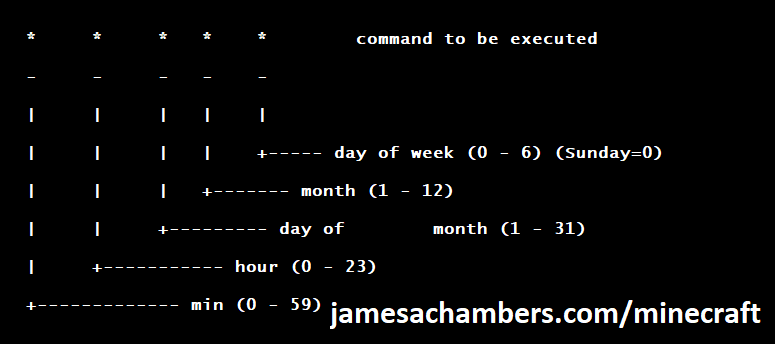
There are 5 fields here. The default restart time is set to reboot at 0 minutes of the 4th hour of the day (4 AM). The other 3 fields are left as * to represent every day of every month. Make any desired changes here and press Ctrl+X to exit nano and update the cronjob.
To remove the daily reboot simply delete the line and save.
Installing Mods / Plugins
The server supports plugins that are compatible with Bukkit / Spigot / Paper. A popular place that you can get plugins is at dev.bukkit.org where there are thousands of them!
To install a plugin you simply download the .jar to the minecraft/plugins folder and restart the server. For example, WorldGuard is a very popular plugin that lets you add protection to different areas of your server.
To install this plugin on our Minecraft server we would use the following commands:
cd ~/minecraft/plugins curl -H "Accept-Encoding: identity" -H "Accept-Language: en" -L -A "Mozilla/5.0 (Windows NT 10.0; Win64; x64) AppleWebKit/537.36 (KHTML, like Gecko) Chrome/90.0.12.212 Safari/537.36" -o worldguard.jar https://dev.bukkit.org/projects/worldguard/files/latest sudo systemctl restart minecraft
The reason the middle line is so long is that “robots” (roughly anything that isn’t a web browser being used by a user in this context) including scripts and utilities are blocked by the Bukkit server. The extra parameters we’re including in this line will add the location (-L) flag as well as a user agent and an identity / language header which will allow us to fetch the files without getting a 403 forbidden error.
Make sure to change “-o worldguard.jar” (second to last parameter) and the URL (very last parameter) to match the project you want to download.
The server will restart and the plugin will be installed. It’s that simple! To use the plugin refer to the documentation on the plugin download page to find out which commands you use to configure/interact with it.
Warning: be advised that plugins are the #1 issue for performance degradation on Minecraft servers. This isn’t because all plugins are bad. Some plugins are coded very inefficiently or perform features that require a lot of hooks in the code.
You should be careful about what plugins you install on the server and if you start having bad performance disable your plugins one by one until you find the culprit!
Reconfigure / Update Scripts
The scripts can always be reconfigured and updated by downloading the latest SetupMinecraft.sh and running the installer again. It will update all of the scripts in the Minecraft directory and reinstall the startup service for you.
Running SetupMinecraft.sh again will also give you a chance to reconfigure options such as the memory dedicated to the server, daily reboots, starting the server on boot, etc.
This will not overwrite your world or any other data so it is safe to run!
Port Forwarding
If everyone on your server is on the same LAN or WiFi network as you then you don’t need to do this. If you want people to connect from outside your local network then you need to set up port forwarding on your router.
The process for this is different for every router so the best thing to do is just look at your router and find the model # and put that in google with port forwarding for easy instructions on how to do it for your specific router.
You want to forward port 25565. The type of connection is TCP if your router asks. Once you do this people will be able to connect to your Minecraft server through your public IP address. This is different than your local IP which is usually a 192.x.x.x or 10.x.x.x. If you don’t know what that is just go to google and type “what’s my ip” and Google will kindly tell you!
Wired vs. Wireless
Going with an ethernet (wired) connection is going to be faster and more reliable. There’s so much wireless traffic and other interference in the air that running your server on WiFi is not recommended.
Even if it is working great 99% of the time it can ruin your experience very quickly if the WiFi drops for a couple of seconds and you get blown up by a creeper!
All that being said, the server works fine on wireless. The script will work fine as is with a wireless connection.
Upgrading
PLEASE BACK UP YOUR SERVER FIRST! The server makes automated backups by default for you in the backups folder but I recommend you back up the entire server folder yourself (basically the entire minecraft folder) any time you attempt to upgrade or downgrade. If you need to roll back to older versions it won’t work without a backup from that version or older!
The easiest way to upgrade an installation is to download the latest SetupMinecraft.sh and run it. This will automatically upgrade you to the latest version.
Upgrading and downgrading to versions that aren’t the default the script chooses is pretty simple. Simply change the Version line at the top in the SetupMinecraft.sh script:
#!/bin/bash
# Minecraft Server Installation Script - James A. Chambers - https://jamesachambers.com
# More information at https://jamesachambers.com/raspberry-pi-minecraft-server-script-with-startup-service/
# GitHub Repository: https://github.com/TheRemote/RaspberryPiMinecraft
# Minecraft server version
Version="1.16.1"
Edit this file in your favorite text editor (you can use nano or vi on the Pi like nano SetupMinecraft.sh) and change the Minecraft version to what you want.
Downgrading
PLEASE RESTORE USING A BACK UP FROM THE VERSION YOU ARE DOWNGRADING TO
If you are having problems on a newer version of Minecraft and want to downgrade you can do so using a complete backup of your server before you ran it on a newer version.
The reason you can’t take server data that has been touched by a version such as 1.17 and go back to 1.16 is that the new version adds all sorts of new data types/structures for the new content into your server data files. If you try to roll back the old versions of the Minecraft server will not understand these data types since they didn’t exist in that version and will crash.
As long as you use a backup for your server files from that version (or older) it’s as simple as changing the version in SetupMinecraft.sh just like I show in the “Upgrading” section.
You can upgrade any old version of Minecraft to any version, but again make sure you have a backup first as it is a one way street and you will need that backup if you want to roll back!
Troubleshooting Note – Oracle Virtual Machines
A very common problem people have with the Oracle Virtual Machine tutorials out there that typically show you how to use a free VM is that the VM is much more difficult to configure than just about any other product / offering out there.
It is because there are several steps you need to take to open the ports on the Oracle VM. You need to both:
- Set the ingress ports (TCP/UDP) in the Virtual Cloud Network (VCN) security list
- *and* set the ingress ports in a Network Security Group assigned to your instance
Both of these settings are typically required before you will be able to connect to your VM instance. This is purely configuration related and has nothing to do with the script or the Minecraft server itself.
I do not recommend this platform due to the configuration difficulty but the people who have gone through the pain of configuring an Oracle VM have had good experiences with it after that point. Just keep in mind it’s going to be a rough ride through the configuration for most people.
Troubleshooting Note – Hyper-V
There is a weird bug in Hyper-V that breaks UDP connections on the Minecraft server. The fix for this is that you have to use a Generation 1 VM with the Legacy LAN network driver.
Version History
To view the version history check out the GitHub README here:
Update History – RaspberryPiMinecraft – Official GitHub Page
Other Resources
If you’re trying to set up SSD / USB storage booting check out my Raspberry Pi USB booting setup guide
For benchmarks and recommendations on the fastest storage drives/adapters for the Raspberry Pi check out my 2021 Storage Roundup
If you’re having firmware issues and need to update/restore your firmware check out my Raspberry Pi firmware guide here


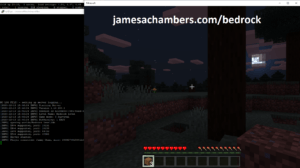


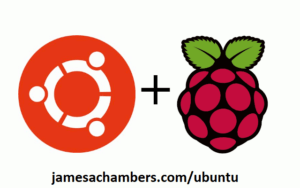
I am having an issue everything works fine but as soon as I attempt to connect to the server it encrypts and tries to but I get disconnected and then I try to run the screen -r minecraft with the output
There is no screen to be resumed matching minecraft.
Hey Benjamin,
That’s a little bit more unusual of one. It sounds like it’s crashing!
Can you pull the log file out of the “logs” directory? Since the screen is getting closed the log is probably going to be the only way to see what is going wrong.
I vaguely feel like I’ve seen this before but it was options related. Did you change any settings in server.properties, particularly compression threshold or anything like that? Is this default settings?
the server crashed and I’m getting the following error:
Exception in thread “AWT-EventQueue-0” java.lang.OutOfMemoryError: Metaspace
before this he server kept stopping without any warning and without any crash report
Hey Ross,
Usually people’s instinct when they get this error message is to turn up the amount of RAM allocated to the server when you run SetupMinecraft.sh. In this case though it’s misleading, it really means the OS doesn’t have enough memory to give the Minecraft server’s Java process what it asked for.
The last couple of people I have spoken with in the comments having this issue ended up needing to turn the RAM/memory they were giving to the server DOWN. Why? Because what is actually happening on your system is that it’s not leaving enough memory for everything else.
This causes processes to start being forcefully terminated, which is why you observed the behavior of it just shutting off without any graceful close, log messages, etc. The OS forcefully killed it because if it hadn’t the entire system itself was going to crash since it was too starved for memory to continue operating. It was either kill the process using up all the memory or have every single process and the system itself crash!
You did at least get a Java OutOfMemory error message out of it which I’ve seen this happen without even getting that. The reason you got the message is that if the Minecraft server can get away with using less memory than you gave it in SetupMinecraft.sh it will. But you gave it permission to request up to the amount you put in SetupMinecraft.sh and after some server activity it finally did and the request was denied because there was nothing left to give it without compromising the system. Then it spit out that error and died! By turning down the memory you give the server in SetupMinecraft you’ve told the server not to try to request more than is going to be available which will prevent this conflict.
Are you using this Pi for anything else or running any competing services? If you run the command ‘top’ is the server fighting for memory/cpu cycles with other things on the list?
What is the memory size of your Pi and how much did you give it? I would try running SetupMinecraft.sh again and try giving it 200-300MB or so less than before and see if this stops this behavior for you!
I have the 4gb Pi 4. I reduced the amount of RAM i was giving it and it works a treat now! Thank you very much for your reply 🙂
Hey Ross,
Thanks for the follow up post! I think I need to lower the “recommended” amount of memory because this has been coming up a lot lately. I set the recommendation algorithm years ago and I’m guessing that Raspberry Pi OS requires a little bit more memory for itself now than back when I wrote that memory estimation algorithm.
I’m very glad you found success!
Thanks this works great! Is there any way of choosing the seed for this server?
Hey Josh,
You can absolutely set a seed! Here’s how you do it:
The file server.properties contains a line that will say
level-seed=with nothing else after it. You simply place the seed here!If this is a brand new server it will have started once before you can set the seed. Here’s the trick: After the script has completed and launched the server for the first time go ahead and close it (or type ‘stop’ in the console) and shut it down completely. Now edit server.properties and place your seed in the file. Next delete the “world” folder (rm -rf world from inside the ~/minecraft/ folder or just delete it in a File Explorer window) that the server created and then restart it with
sudo systemctl restart minecraftor you can use the start.sh script inside the folder.And that’s it, all chunks in the world folder will now generate using the seed you put in server.properties!
Thanks!
Not sure what I am doing wrong – but I cannot connect to the server on my iPhone nor iPad. I get the Unable to connect to World message.
Install seem to go fine and I get a prompt on the server:
[11:50:41 INFO]: Preparing spawn area: 0%[11:50:42 INFO]: Time elapsed: 2016 ms
[11:50:42 INFO]: Running delayed init tasks
[11:50:42 INFO]: Done (34.555s)! For help, type "help"
[11:50:42 INFO]: Timings Reset
All devices and the server are on same wifi network.I can connect via iPhone to RaspberryPi using SSH (via Prompt app).
Using Pi4 8GB.
I have tried it with several different base OS.
Currently testing the 64bit beta of Raspberry Pi OS as I wanted something simple to test and wanted to make use of the memory – 32bit OS seemed to have lots of performance related warnings appearing on the server.
I have tried using the autoconfg tool on this page as well as following the performance guide.
When I try to connect to the server – I see an animated ping graph which does not happen if the server is off.
I have tried setting the port to 25565 and 19132 – but the prompt does say:
[11:50:09 INFO]: Starting Minecraft server on *:25565Should this show the IP address of the server – of is * a valid wildcard?
What else can I try?
Any help ideas really appreciated – the server is a project I am building with my 8 year old as a birthday present and he is miffed we cannot get it to work!
Hey Matt,
The iPad and iPhone use the Bedrock edition of Java. That would be the port 19132 but this is the Java server which the iPad and iPhone can’t use.
I do have a guide for that version available here.
Sorry for the confusion! They have made it very confusing with the two different editions of Minecraft. Microsoft is *terrible* at naming things. Look at what they named the new consoles! The “Xbox Series X” instead of the “Xbox One X”. I wonder how many people got old gen Xbox Ones for Christmas when parents thought they got the new one!
The best rule of thumb is PC only is Java, and everything else is Bedrock (Xbox, Playstation, Switch, iOS, Android, etc). There is a Bedrock client for Windows as well which is called “Minecraft for Windows 10 Edition” that can only be obtained through the “Microsoft Store” app.
You can absolutely still give the Bedrock server a go on the Pi but since it’s emulation it’s quite slow. The Java one is the best for the Pi for sure (for now, the server is still in alpha, hopefully on release we will get the ARM version)! This has confused countless people over the years and even to this day I still sometimes have to do a double take!
I personally haven’t tried this (I don’t have any Bedrock clients) but you can try using Geyser MC to allow access to your Paper MC server on your Pi from Bedrock clients (iPad/iPhone). Geyser can be used as a plugin for Paper (download the Geyser-Spigot.jar). With 8GB of memory you should be fine in running Paper with a plugin or two. There is a full setup wiki here.
Good luck, and I hope this gets the birthday gift fully working!
Hi!
Great script! It works great… except for performance.
I thought it was a problem with the drive — my SD card only got just above 700 points — so I bought a better one — 1400 points — and even prepared myself for the worse and bought a SSD — I had a USB 3 enclosure and got about 4500 points.
Problem persists even with the SSD.
Moving across the world is flawless, but breaking blocks is not: when I break a block, it stays in place for one more second and then fall, sometimes it even goes back in place and I have to break it a second time.
How can I make it work? What could be the problem? (NB: I’m using a wired connection for both the client and the server).
Hey ragmaxone,
You’re right, that’s way too slow! Which Pi are you using and how much memory does it have? Are you using Raspbian/Raspberry Pi OS? Is the Pi being used for anything else?
Basically if you took a 4GB to 8GB Pi and imaged it with the latest Raspberry Pi OS and then installed the script it should not have a block break delay like this. When I was playing with some friends on a server a few months ago I used a SD card for the first few weeks and eventually upgraded to a SSD but at no point was it taking nearly so long to break blocks. When I was on the SD card when I first started up the server there would be a block break delay for like the first I would say maybe 60 seconds after the server started then it would go away completely.
How much memory are you allocating for the dedicated server when you run the setup script? Depending on the memory size of this Pi you may need to use one without a GUI like Raspberry Pi OS Lite etc.
RPi4 with 4GB, latest Raspberry Pi OS from Raspberry Imager, 2700MB allocated — I’ll re-check tomorrow because I’m not if I didn’t leave the default value.
The only thing running is a Hamachi VPN.
The system was initially created on another SD card, I then made a backup and wrote it on both the new SD card and the SSD to try them.
When I read about “the first 60 seconds” it came to my mind that it not a new world… could it be a problem that the world is from a server that initially run on Windows?
I’ll try to switch to a new world and also kill Hamachi.
Hey ragmaxone,
Thanks for the additional info! Your hardware configuration looks good to go with plenty of power and memory.
If we are dealing with an existing server there’s some things to watch out for. Bringing a server over from Windows shouldn’t be a problem. The issues with existing servers we need to watch out for are:
There’s something else I’d like you to try. Sometimes SSDs and SD cards get slow like this if they need a “trim”. Can you try running the following command:
sudo fstrim -avwhich will tell your Pi to run the trim command on all supported devices.
The reason it can help is SD and SSDs don’t actually delete data when it’s removed from a drive and instead clear it before writing something new. This can have a horrific impact on server type applications (Minecraft server especially as it’s constantly reading/writing block/chunk changes) that a trim can help substantially with.
The trim command tells it “delete this data now so it’s clear and you don’t have to do it during the write”. This may reduce your block delay time just from running this command. If it tells you it trimmed tens of gigabytes of data (or more) then you were likely being impacted by this to some extent, but there’s likely multiple factors at play here so this is just one piece.
Disabling Hamachi temporarily as a test should be fine to rule it out. Maybe the service for it is using more memory than we think. If you monitor your system with the ‘top’ command how much memory is that process using? Does the server look like it’s fighting with anything else for CPU cycles / memory?
If the source of lag is coming from inside the server we can test the TPS / performance inside the server with the Minecraft Timings tool. You may want to run the timings with the server running as that can often immediately point to the source of the lag if it isn’t hardware/resource/config related. I cover how to use the timings tool in this guide. It’s dated but should still be the same process!
I’m interested to see what your fresh world test ends up yielding. That will narrow things down significantly!
Sorry, after digging for a while I just realized I didn’t used Your script for this server…
I found another tutorial at the same time I found Yours and tried that one first.
I made another install and used Your script and with an empty world the game is running great.
I tried to import my old world but:
1. I only have one folder “world”, I don’t have any “nether” or “end” folder
2. I copied the content of the world folder in the world folder on the server but then minecraft server does not want to load.
How should I proceed to import my world (if there already an article about this I didn’t find it so a link will be good).
Hey ragmaxone,
You’re really close! Instead of combining the world folders go ahead and delete the old one first and then copy in the new one.
Make sure the server is completely closed when you do this and then restart it afterward. That should do the trick!
thanks, the server started, and there is no lag when breaking blocks.
however, I tried to enter the nether and I got disconnected from server: the nether started loading, I saw about 10 blocks around me but nothing more and then it crashed.
now I get en error “Connection refused: no further explanation” even after restarting the server I get the same error (the first error happened while I was in the nether)
one thing: at first I deleted all world* folders and then moved in my own world folder.
I just realized somehow the world_nether and world_end folders have been recreated (I can’t say if it was during the first restart of minecraft or after).
Hey ragmaxone,
Yeah I have absolutely done this before a couple of times over the years. Even when the Nether folders come back it doesn’t fix it because your character is stuck in a version of the Nether that no longer exists (usually buried inside a mountain of Netherrack so deep it can’t even calculate a way out or underneath a giant pool of lava).
You have a couple of options. The best option is to download NBTExplorer which will let you edit your Minecraft files.
What you want to do is shut down the server completely first and then you’ll edit your .dat files and find your account and change the “dimension” field to 0 (dimension 0 is the overworld or main map). You can edit the files on both Linux and Windows and there is even a Mac version! Here’s a reddit thread from a long time ago on how to do this but the process is the same today!
Here’s a bonus link to all the different options available in there and what they do (you’re looking for dimension and setting it to 0). You may need to adjust your other coordinates as well to not be buried inside the earth. Setting it to the spawn coordinates (X Y and Z) is usually a safe bet!): gamepedia Player.dat format.
The second option is the easier option. You can go to your playerdata folder and just delete your entire profile. Here’s a guide on how to do this. This will make you lose everything in your inventory and start at the spawn as if you had never logged on before. This isn’t good if you have actually done anything or were carrying anything valuable but if it was a brand new server or you were just testing sometimes it’s easier just to remove the player’s UUID file in playerdata and start fresh!
Make sure you have full backups of everything before attempting anything. Definitely let us know how it turns out!
So… 🙂
I found out that the server is actually working. It’s just that at some point (generally when I go to the nether, go back etc.) it crashes.
That’s what happened the first time, and when I tried to relaunch the server, it took so long I thought it was broken.
I realized it was because after the crash it need more time to save the data or restore the backup, because sometimes it wouldn’t save the changes.
Sometimes, there even is a problem with portals: I got to the nether but can’t go back.
My overwolrd and my nether are quite big, could it be the reason?
What can I check? Where can I look for possible problems?
Thank you so much for the amazing script! It works flawlessly
Thanks Ben!
how do you get the ip address so you can join the server on my pc
Go to whatsmyip and the top number should be your routers iP-adress.